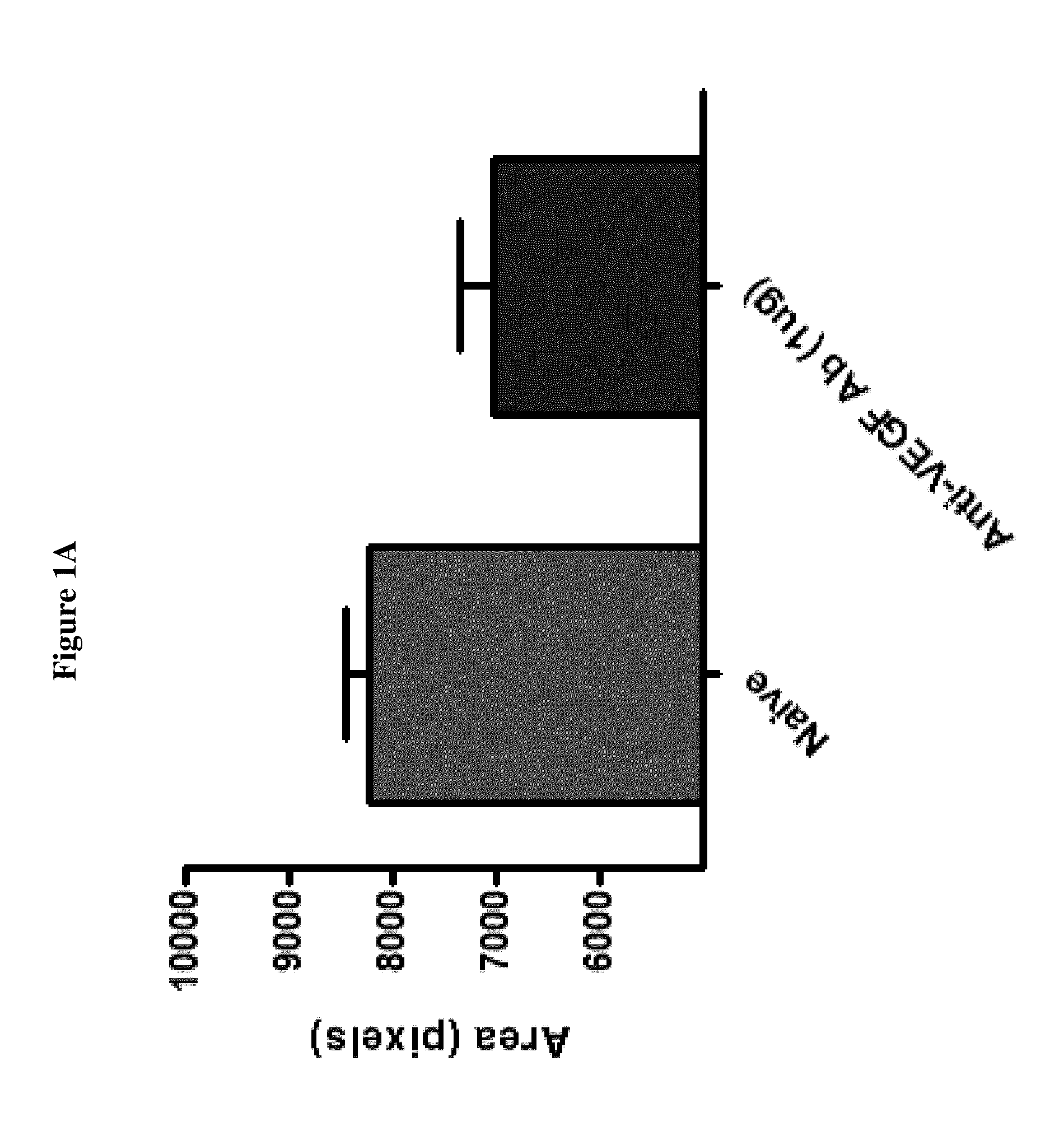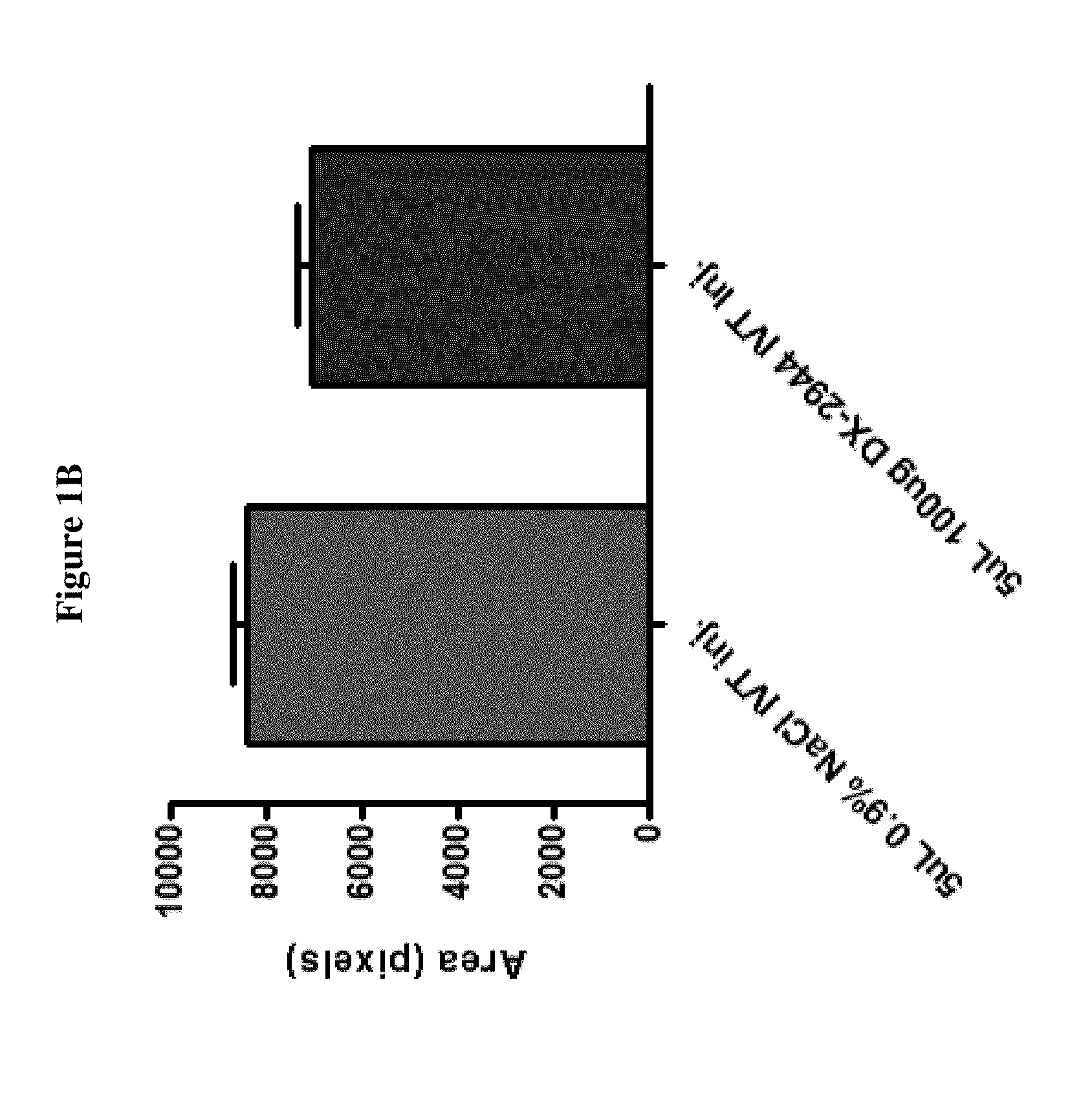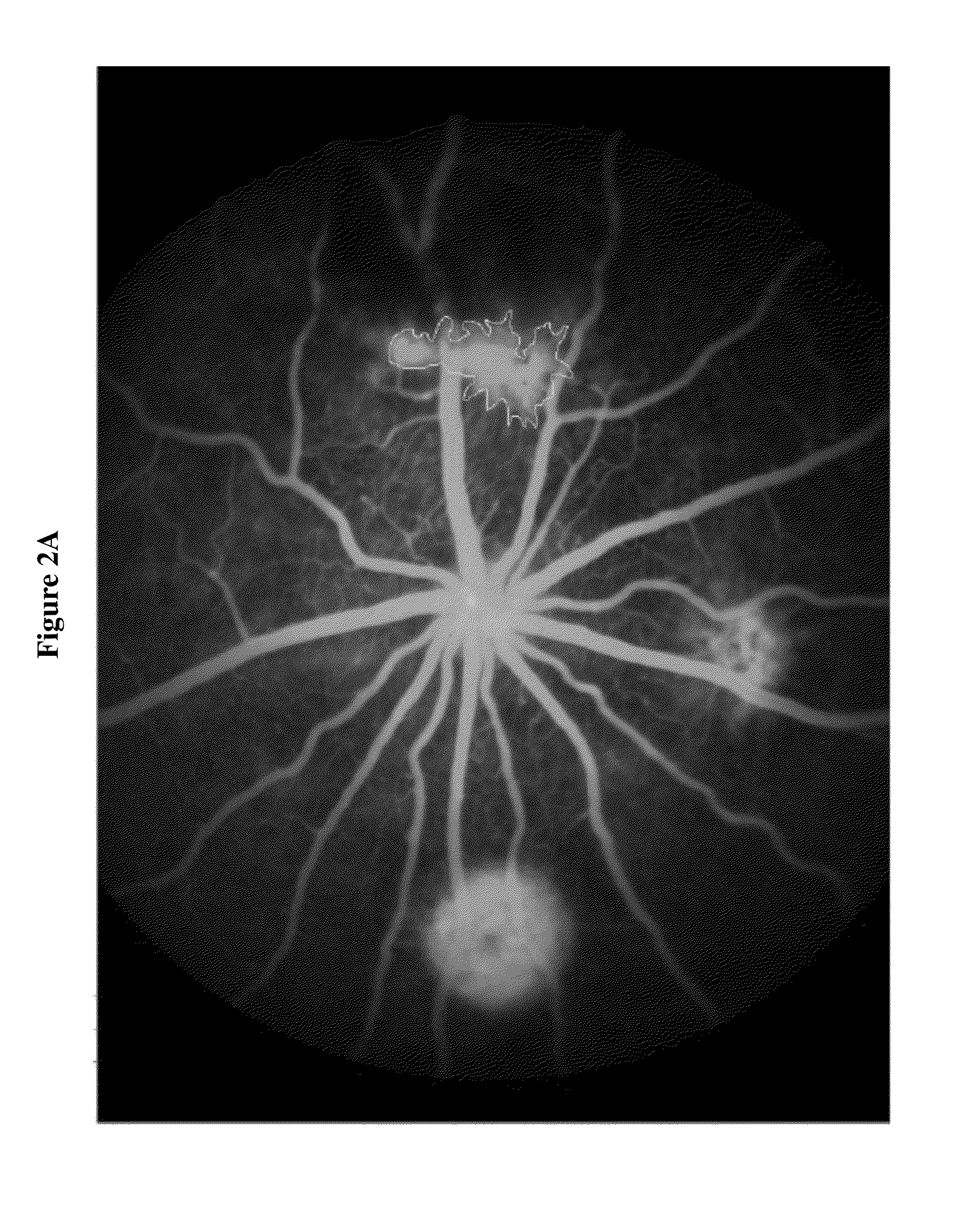Compositions and methods for treatment of diabetic macular edema
- Summary
- Abstract
- Description
- Claims
- Application Information
AI Technical Summary
Benefits of technology
Problems solved by technology
Method used
Image
Examples
example 1
Effect of DX-2944 in a Laser Induced Choroidal Neovascularization (Laser CNV) Disease Model
[0128]DX-2944 is a recombinant Fab version of DX-2930 that was expressed and purified from an E. coli expression system. The Laser CNV model is an established rodent model of complications associated with human retinal diseases, such as age-related macular degeneration (AMD), retinal vein occlusions, and macular edema. The experimental design used for this study is outlined below.
Experimental Design
[0129]Day 1: Bilateral Laser treatment to produce 3 lesions per eye[0130]Day 3: Bilateral Intravitreal injection of test agent, vehicle or, positive control (anti-VEGF Ab)[0131]Day 22: In-vivo fluorescein angiography
[0132]The results in FIGS. 1A-1B and FIGS. 2A-2B indicate that DX-2944 reduces observed CNV to approximately the same extent as the positive control (an anti-VEGF antibody). The fluorescein angiography mean signal for the anti-VEGF treated group was 7023 fluorescence units, which is simi...
example 2
Identification of Critical Residues in the Catalytic Domain of Human Plasma Kallikrein Based on Crystal Structures of DX-2930-PKal Complex
[0133]The catalytic domain of human plasma kallikrein, fused with a His-tag, was expressed in insect cells and purified initially by a nickel affinity column. The His-tag was removed from the plasma kallikrein via trypsin digestion and the free plasma kallikrein was purified by a benzamidine affinity column, followed by a SEC column. The purified product was examined on a PAGE gel. The result indicates that the catalytic domain of human plasma kallikrein was properly expressed and purified.
[0134]DX-2930 was prepared via routine recombinant technology and purified. A recombinant Fab fragment of DX-2930 was produced via routine method and purified.
[0135]The DX-2930 Fab fragment and the catalytic domain of human plasma kallikrein were mixed at various concentrations under suitable conditions allowing formation of antibody-PKal complexes. The complexe...
example 3
Affinity Maturation Results Match Structural Information Derived from Crystal Structure
[0141]The heavy chain variable region, particularly the HC CDR3 region, of antibody M0162-A04 was subject to affinity maturation. Various mutants having amino acid variations at one or more positions in the HC CDR3 region were generated and their Ki,app values were determined following routine methods.
[0142]Briefly, PKal and a Fab at various concentrations are incubated together for 1 hour at 30° C. A substrate peptide (cleavable by PKal) is then added to this PKal-Fab mixture. The rate of substrate peptide cleavage / proteolysis is then measured, and plotted against the concentrations of the Fab. This plot is then fit to the Morrison equation, which calculates the Ki,app value. The results thus obtained are shown in FIGS. 5A-5D and Table 3 below:
TABLE 3Summary of Hv-CDR3Affinity Maturation ResultsInitialKi,appNameHv CDR3(nM)M0162-A04RRTGIPRRDAFDI2.5M0199-All--R----------2M0201-F11--S----------3M020...
PUM
| Property | Measurement | Unit |
|---|---|---|
| Fraction | aaaaa | aaaaa |
| Fraction | aaaaa | aaaaa |
| Molar density | aaaaa | aaaaa |
Abstract
Description
Claims
Application Information
 Login to View More
Login to View More - R&D
- Intellectual Property
- Life Sciences
- Materials
- Tech Scout
- Unparalleled Data Quality
- Higher Quality Content
- 60% Fewer Hallucinations
Browse by: Latest US Patents, China's latest patents, Technical Efficacy Thesaurus, Application Domain, Technology Topic, Popular Technical Reports.
© 2025 PatSnap. All rights reserved.Legal|Privacy policy|Modern Slavery Act Transparency Statement|Sitemap|About US| Contact US: help@patsnap.com



